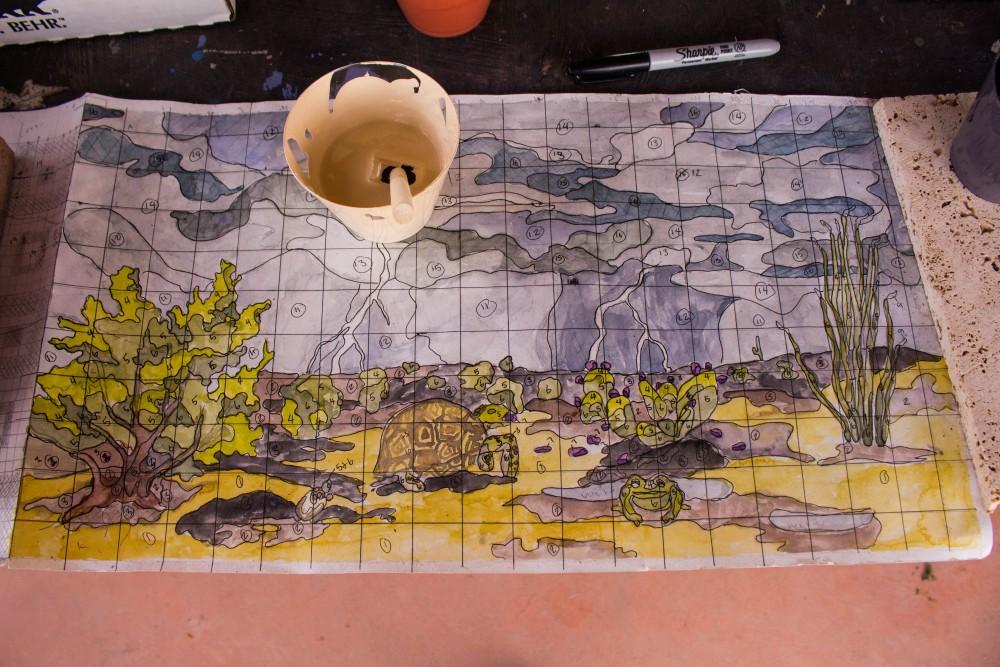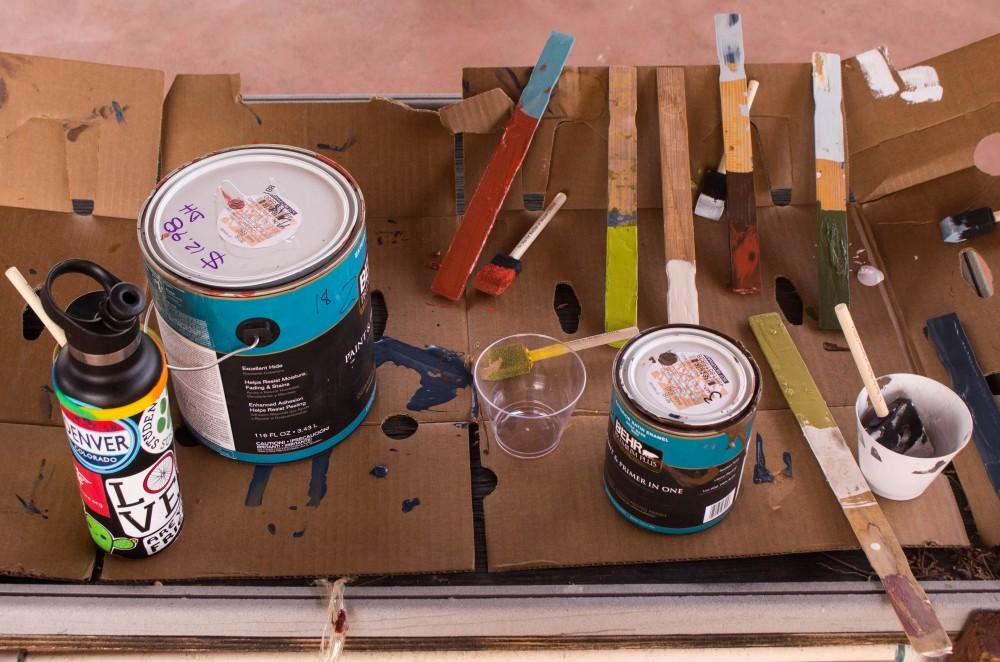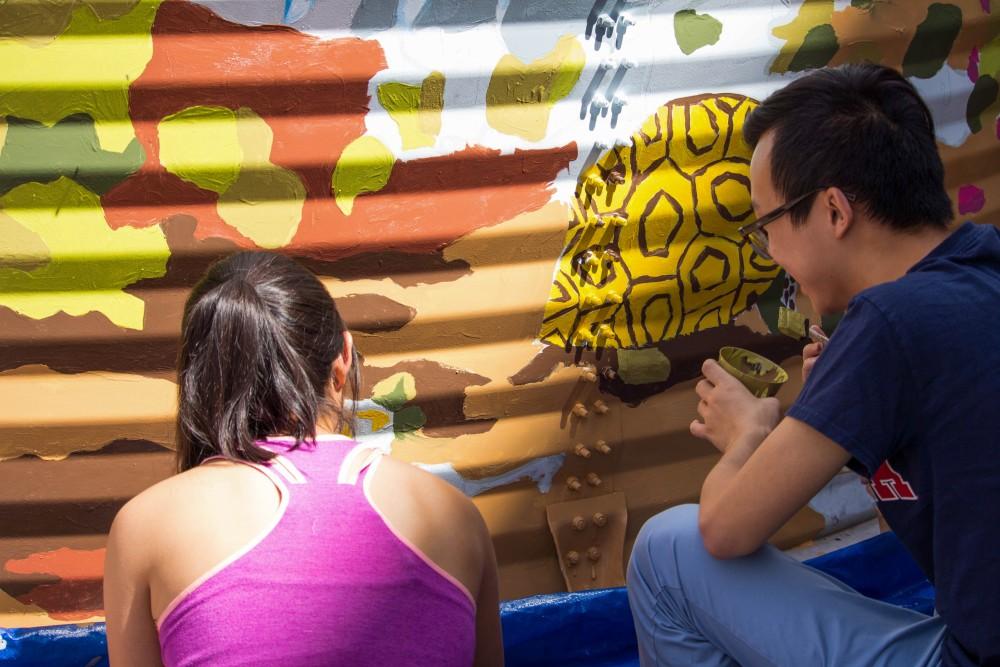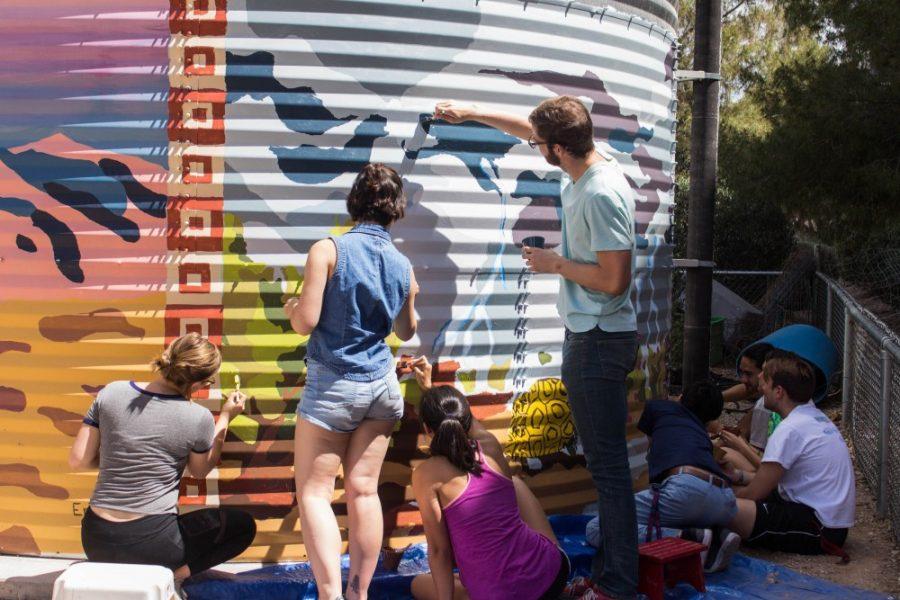Using art to teach about water irrigation, Students for Sustainability painted a three-part mural series in the UA Community Garden with the goal of inspiring and educating students and members of the neighborhood.
Students for Sustainability, an Associated Students of the University of Arizona program that “empowers students to become leaders in their community,” gathered in the garden, located at 1800 Mabel Street, to provide information on water irrigation in the Southwest. Students and community members painted a mural on the cistern in the garden that stressed the importance of understanding the means of water distribution in a desert climate.
Students for Sustainability has left an impact on campus in its efforts to improve the sustainability of life and nature in Tucson. Projects include water bottle refill stations on campus, a large active rainwater harvesting cistern in the community garden, panels with campus cultural centers on the intersection of social justice and the environment and a Women in Green Leadership panel.

“To me, sustainability is the opportunity to engage with the Earth and community around us in a relationship which encourages prosperity of each for the present and the future,” Amy Stalkfleet, environmental arts committee chair for Students for Sustainability, said. “The main goals of Students for Sustainability are to impact our campus and community through student-driven projects.”
Members of the organization seek out opportunities, such as the cistern painting, to integrate art in their work and highlight the environmental agenda of the activities.
The mural project used the creation and production of art to foster community dialogue among students. The mural reflects a monsoon and that the cistern collects water from these desert storms.
RELATED: Murals of the Tucson community
The mural wraps around the majority of the cistern and consists of three desert scenes, each connected and sharing a similar color scheme: the desert as a dry, somewhat barren environment; the desert during heavy rainfall associated with a monsoon; and finally, the affects the rainfall has on the land.
Each scene interplays with how important collecting water from these storms is and how the water collected allows the environment and vegetation to grow.
The intent of the monsoon mural is that when people walk by the garden or interact with it they can see the vital part water plays in an “irregular environment,” according to Stalkfleet.
People of all skill levels were encouraged to attend and contribute to the mural project, which was a paint-by-numbers outline artwork. This is the second mural painting event that the students have held for the community.
“I definitely have seen a new connection to the garden. People can come in here and say, ‘I painted that’,” Erin Scott, co-chair of environmental arts for Students for Sustainability, said. “I hope that it’s teaching people about water in the desert and I do see that sense of ownership.”
Scott, a sophomore studio art major at the UA, was attracted to this project because of the personal connections people experience.

The cistern, simply a “giant tin can” in the garden last year, is a space for students and community members to be free to create. The importance of students having an individual impact on the community garden opens the door for creativity for future projects, according to Scott.
RELATED: Art and science rendezvous at Tumamoc
The creation of this mural, and the “welcoming atmosphere” of those that attended, demonstrated the importance of bringing the community together to work toward a common goal, according to Scott. This event was sponsored by students that work to teach and include anyone interested in sustaining the environment.
“This program is important because living in a sustainable environment is important to every single living thing on the planet,” Stalkfleet said. “Students have a bigger impact than maybe they know.”
Students for Sustainability works with the university in more ways than just academics; it engages with students on campus, according to Stalkfleet. The committee meets and collaborates on future projects, such as a literary magazine, working with multimedia, performance artists and workshops about reusable bags and other recycled art projects.
“We engage with the Tucson community very often; many of the committees have relationships with community activists and organizations which also focus on the same issues,” Stalkfleet said. “Environmental Arts works with local high schools to inspire critical thinking and exploration of important critical environmental issues through an artistic medium.”

The UA Community Garden also offers an internship for students to connect with local schools and build more community gardens. Students have the opportunity to collaborate with the Tucson Community Food Bank, which provides design and construction training to students who are interested in building gardens that can survive the area’s conditions.
“The leadership and professionalism that you develop in the program are invaluable to each student’s future, regardless of where they go beyond college,” Stalkfleet said.
Follow Daily Wildcat on Twitter









